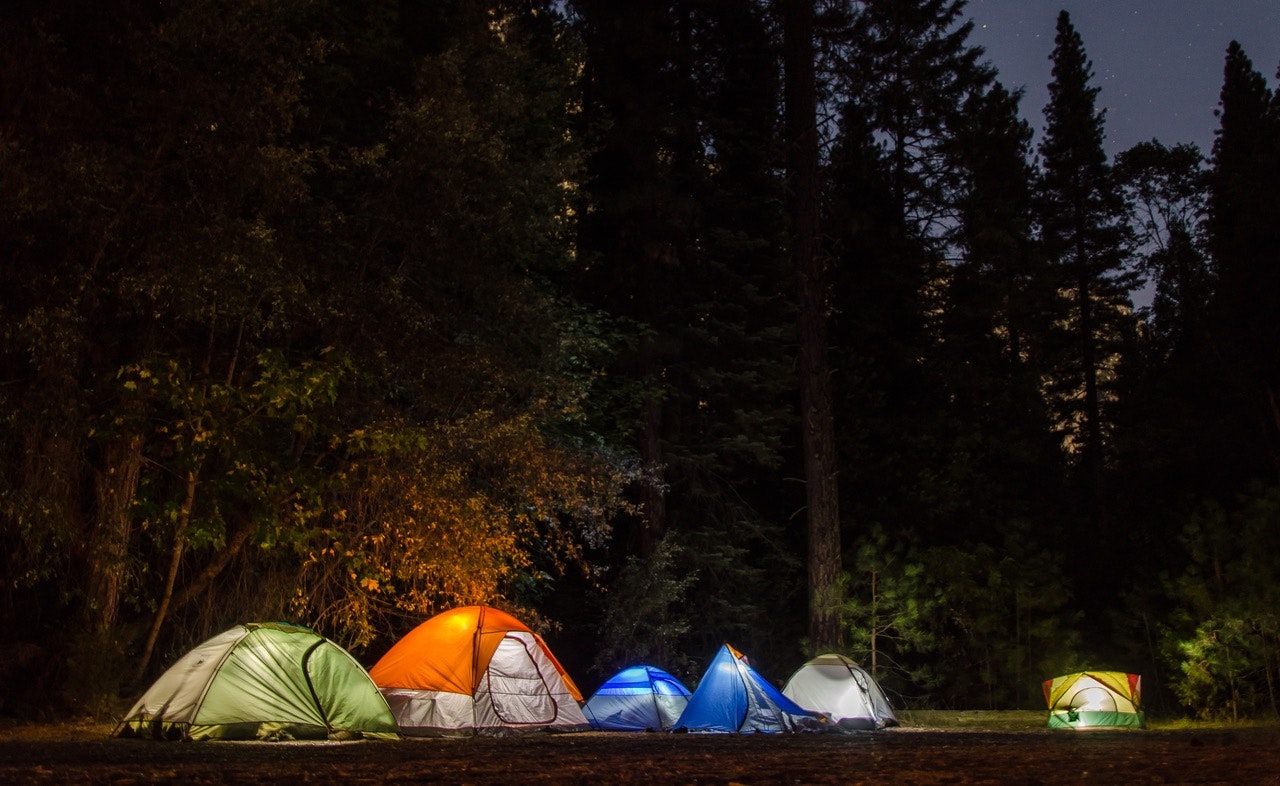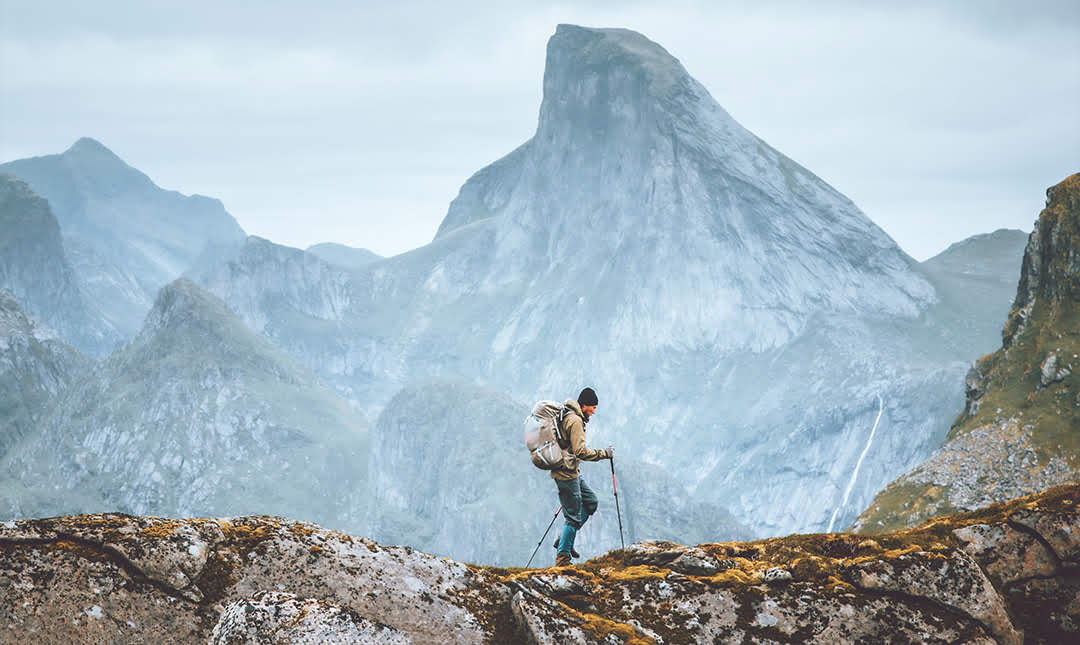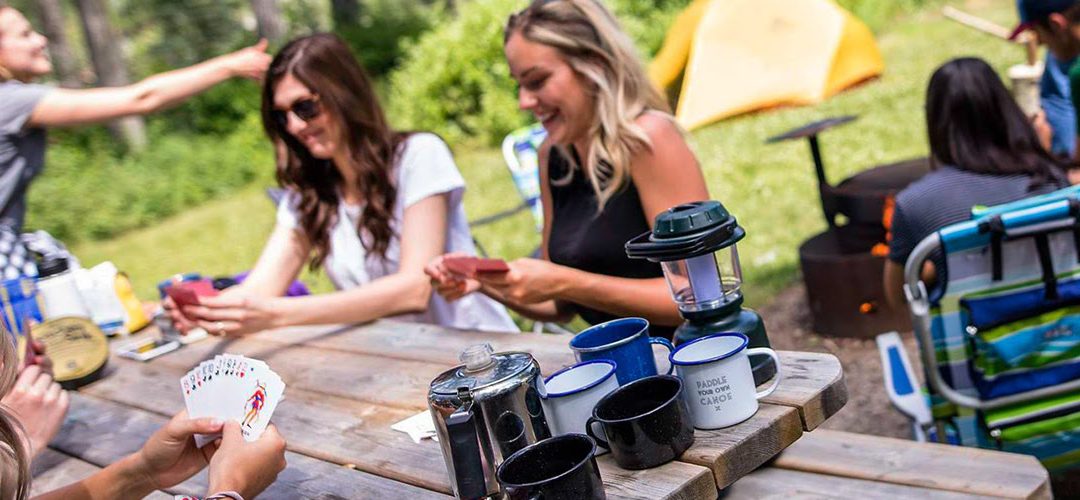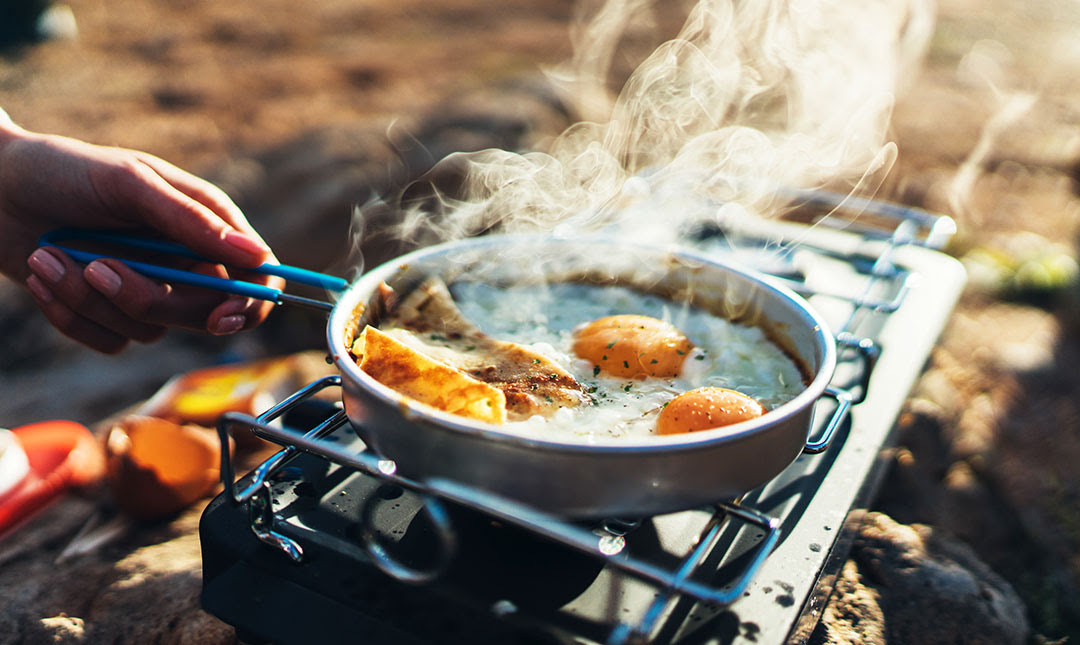When you get cold at home, the solution is normally pretty easy. Just crank up the thermostat, run a warm bath, or throw on one of your many cozy sweaters! But what are you supposed to do when you’re on a camping trip far away from luxuries like central heating, hot water, and a full wardrobe — run laps around the tent? Look, we support exercise as part of a healthy lifestyle, but trust us: there are better ways.
Chilling in the woods shouldn’t mean feeling chilly in the woods. Below, we’ve compiled some of the best tips and tools for keeping warm when you go camping.
See also: The ultimate guide on what to bring camping.
Keeping the Heat On (Yourself)
Before we dive into the list, it’s important to note that not all of these strategies involve creating warmth. Your body does a fair amount of that all by itself — the problems start when this thermal energy is needlessly lost. Some of our suggestions involve making heat with specific tools, but many of them are about helping you trap the heat you naturally produce and keep it in the spaces where it will be most useful to you during cold weather.
It can help to think about insulating yourself in much the same way you would insulate your house. The materials in question may be different, but the end goal is the same: prevent the heat from escaping into the outside air where it can disperse and leave you cold.
And Now: The Top 12 Ways to Keep Warm On Your Next Camping Trip
Without any further ado, here’s our list! Most of these can be accomplished with minimal financial strain, so incorporate as many as you can on your next journey and bask in the feeling of a job well done.
Layer Up Early
If you’re waiting until it gets cold before putting on extra layers, you’re doing it wrong. Layering up keeps heat close to your body, but there’s not much it can do if that heat is already gone. As soon as you notice the weather starting to cool down in the evening, it’s best to throw on a sweater or jacket.
Pack Long Undies
Outerwear will only get you so far without underwear. The layers on the bottom are just as important as those on top, so consider long-johns or leggings made from merino wool or high-quality synthetics. They might look a little goofy, but who cares? They go under the rest of your clothes!
Oh, and one more thing: don’t forget wool socks. Cold feet can be a significant source of heat loss, so keep those toes toasty!
Bring Blankets
We’re going to level with you — we love blankets. Think of them like an extra layer, only more versatile; in addition to covering your body, they can be used to help insulate a tent or provide warmth for a small group of people.
Use the Right Size Tent
We tend to think bigger is better when we’re picking out tents — but that’s not always the case, especially when it comes to staying warm. The extra space inside a giant tent can indeed feel luxurious but remember: that’s also more air in which thermal energy can disperse. A tent with less room will keep any heat in the space more concentrated.
Consider a Tent Carpet
While we’re on the subject of tents, a fitted tent carpet can prevent you from losing heat through your tent’s floor. Don’t feel like buying one? No problem — just bring a throw rug or two from home and put them on top of the groundsheet. You can also spread out styrofoam mats beneath your sleeping bag for a bit of extra insulation (not to mention comfort).
Choose the Right Sleeping Bag
Speaking of sleeping bags, make sure you pack a good one. In general, you’ll want a sleeping bag that fits snugly and can zip up all the way to cover your head (also known as a mummy bag). A cheap sleeping bag or a thin one made only for summer camping will breathe too much, whereas a loose sleeping bag will let too much heat escape from the spaces between your body and the material from which it’s made.
Add a Sleeping Bag Liner
If you only have a summer sleeping bag available, you can improve its heat-retention capabilities by adding a liner to the interior. Silk liners are soft and good at trapping heat, but they can also be fragile. We recommend fleece if you toss and turn a great deal in your sleep.
Sleep with a Hot Water Bottle
Hot water already warms many of our homes, so why shouldn’t you use it to stay warm during a camping trip? As long as you have a hot water bottle that won’t leak and a way to heat water, this is a fantastic way to keep a sleeping bag cozy at night. We recommend warming the water up with a saucepan and portable stove, but you can even use the campfire!
Buy Disposable Heat Packs
Air-activated disposable heat packs are available from many grocery and home improvement stores. Leading brands last for hours and can raise temperatures between 38 and 55 degrees celsius when appropriately used. Many disposable heat packs are meant to be slipped inside gloves while working outside in cold weather, but variations exist for boots and socks.
Sleep Near Other People
You’ve all seen penguins huddle for warmth in nature documentaries, so this suggestion should come as no surprise. Heat naturally flows from hotter objects to cooler ones, so you’ll keep each other warm if you sleep in groups.
Be Active Before Bedtime
A little exercise before tucking in for the night will raise your body temperature, allowing more heat to be captured by your sleeping bag and clothing — as well as any other people who happen to be sleeping near you. Just… try not to sweat too much.
Eat Well & Sleep Full
They don’t call it “burning calories” for nothing, you know. When we eat, our body converts food into energy — and some of that energy gets released as heat while we sleep. The harder our body has to work to metabolize food, the more heat is produced, so fats, carbs, and sugar are your friends here. Who doesn’t need an excuse to eat chocolate before bedtime?
Stay Warm by Staying Smart
You don’t need to break the bank on fancy gear to stay comfortable in a cool campground. We make most of the heat we need all by ourselves — it’s just a matter of ensuring that heat stays close and having easy access to a few external sources. It’s worth investing in a few essential items, but simple household objects can do a lot of the work for you if you know how to use them. Keep this guide as close to you as your favourite pair of long-johns so that you can make sure your next outdoor excursion leaves you with that warm and fuzzy feeling.





Recent Comments